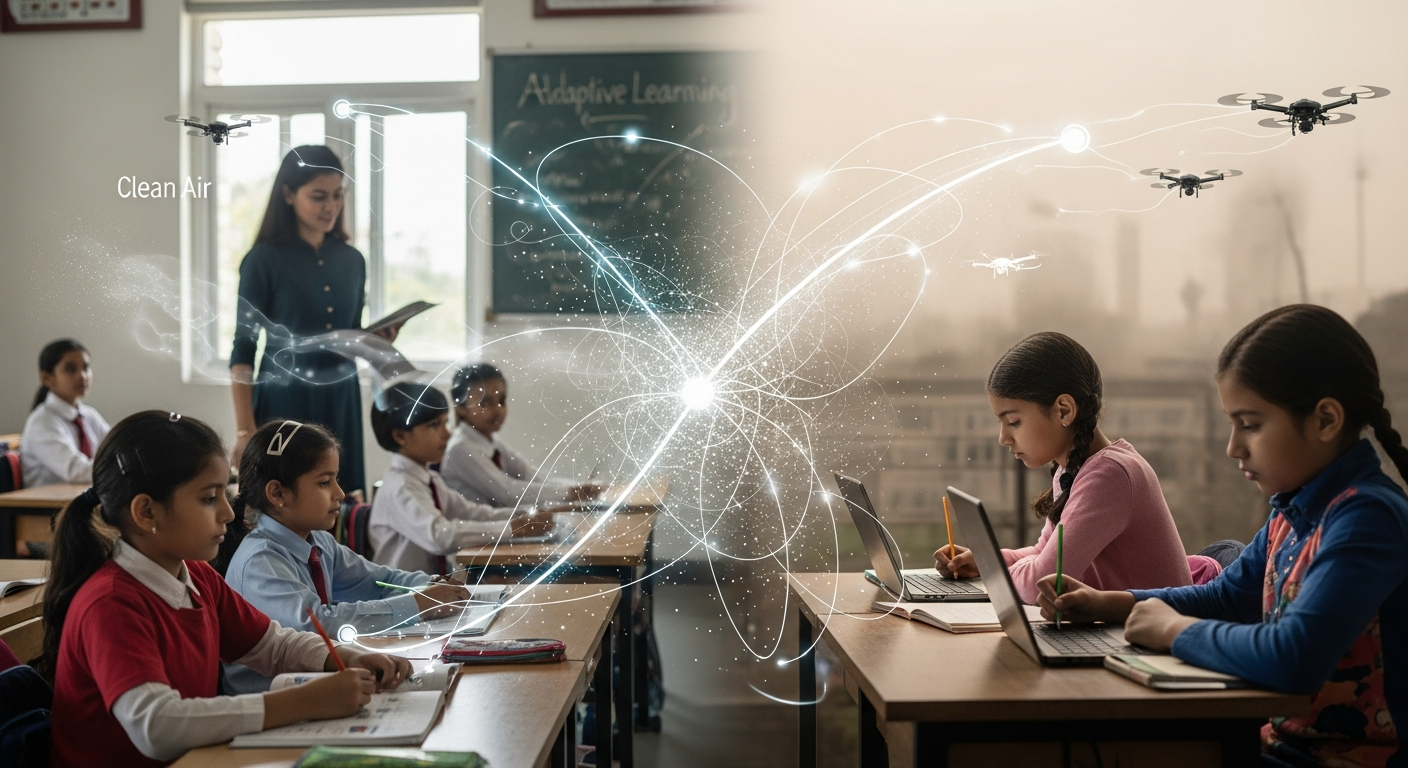
The recent debate in Delhi regarding a hybrid learning model for juniors and traditional classrooms for seniors, driven by fluctuating Air Quality Index (AQI) levels, truly captures my attention Hybrid for juniors, classroom for seniors: Teachers and principals debate Delhi’s AQI-driven divide. It's a stark reminder that our systems, especially those as critical as education, must evolve to address the dynamic and unpredictable challenges of our environment.
I've often reflected on how rigid, centralized controls struggle to manage complex, rapidly changing scenarios. Years ago, while observing the emerging landscape of drone technology, I articulated concerns about managing millions of unmanned drones in our skies. Traditional Air Traffic Control (ATC) models, designed for a few thousand manned aircraft along predefined corridors, simply wouldn't suffice for a future filled with a 'swarm' of drones flying in all directions, at varying speeds and heights. This led me to propose what I termed the "Swarm Algorithm" – an embedded AI within each drone, much like birds instinctively avoid collisions without explicit communication, enabling a self-organizing system for collision avoidance A Swarm-O-Drone is born, Flock Dynamics.
I even remember writing to Harshwardhan, sharing my vision and hope that innovators like him would embrace such embedded, intelligent solutions for navigating complex airspaces. The core idea I wanted to convey then, and still believe today, is that solutions for dynamic environments need to be inherently adaptive, not just reactive. We must move beyond simply enforcing external rules and instead build intelligence into the very fabric of the system itself. This thinking also underpinned my earlier thoughts on GPS tracking for drones to prevent rogue operations, as discussed in 2019 Government plans GPS tracking to prevent rogue drones.
Now, seeing how Delhi's educational institutions grapple with air quality, it's striking how relevant that earlier insight still is. The debate between hybrid and classroom learning for different age groups isn't merely a logistical one; it's a societal adaptation to an environmental reality. Just as drones need to learn to navigate a shared, unpredictable airspace, our educational systems need to develop an intrinsic ability to adapt to external conditions like AQI.
Perhaps this hybrid model is a step towards that. It acknowledges the need for flexibility and a nuanced approach, rather than a one-size-fits-all solution. Reflecting on it today, I feel a sense of validation for the idea of building adaptive intelligence into our systems, and a renewed urgency to revisit those earlier ideas, because they clearly hold value in the current context of making our institutions resilient and responsive to ever-changing realities.
Regards,
Hemen Parekh
Of course, if you wish, you can debate this topic with my Virtual Avatar at : hemenparekh.ai






No comments:
Post a Comment